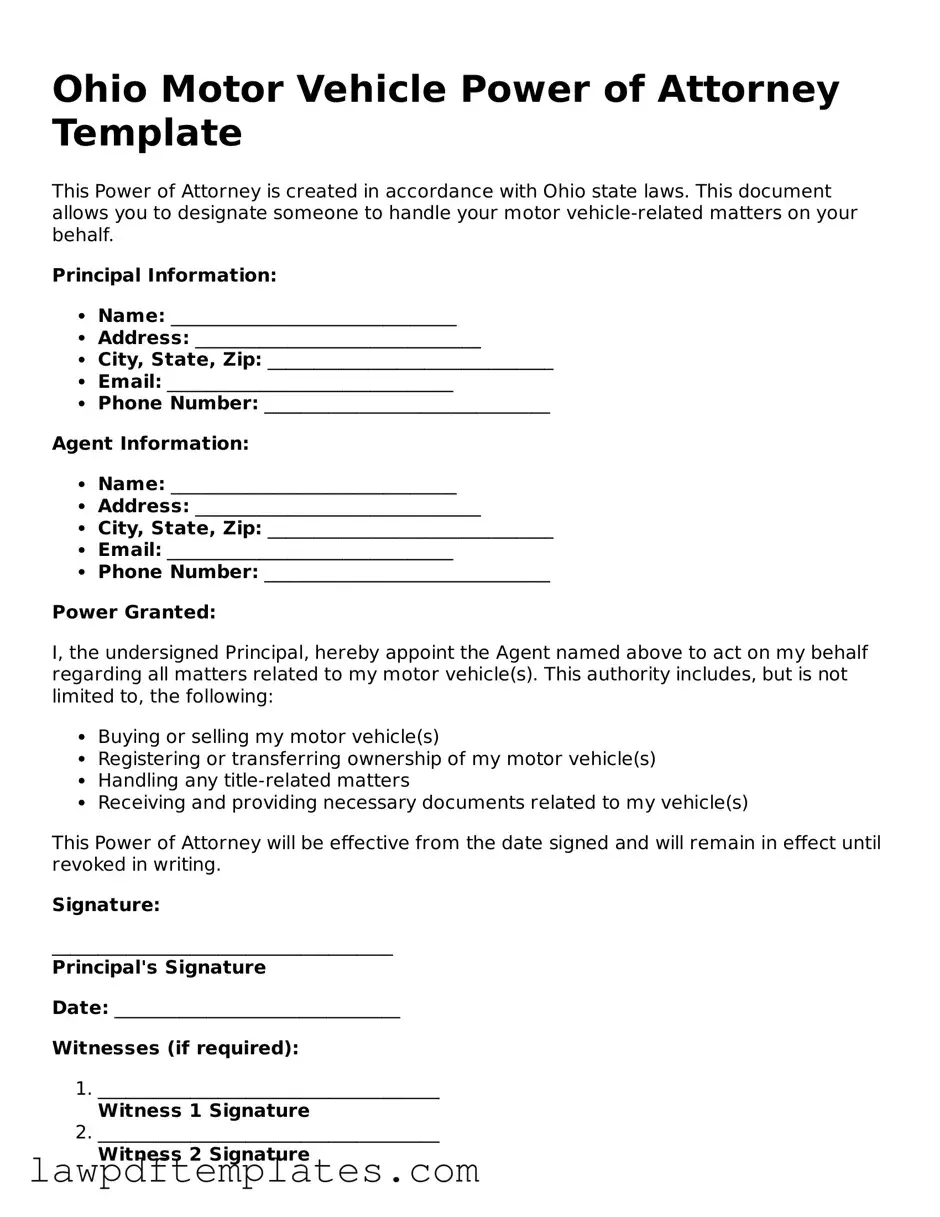Filling out the Ohio Motor Vehicle Power of Attorney form can seem straightforward, but many people make common mistakes that can lead to complications. One significant error is not providing all required information. This form requires specific details about both the principal and the agent. Omitting even one piece of information can render the document invalid.
Another frequent mistake is failing to sign the form. Both the principal and the agent must sign the document for it to be legally binding. If either party neglects to sign, the form cannot be used to authorize the agent to act on behalf of the principal.
People often overlook the importance of having the form notarized. In Ohio, notarization is typically necessary for the Power of Attorney to be accepted by the Department of Motor Vehicles. Without a notary's signature, the document may not hold up under scrutiny.
Additionally, individuals sometimes select an agent who is not reliable or trustworthy. It is crucial to choose someone who will act in your best interest. Selecting the wrong person can lead to misuse of authority and potential legal disputes.
Some individuals also forget to specify the powers granted to the agent. The form allows for a range of powers, from transferring titles to signing documents. Failing to clearly outline these powers can lead to confusion and unintended consequences.
Another mistake is not dating the form. A date is essential as it indicates when the authority begins. Without a date, there may be questions about the validity of the Power of Attorney, especially if disputes arise later.
People sometimes use outdated versions of the form. Laws and requirements can change, so it is important to ensure that you are using the most current version of the Ohio Motor Vehicle Power of Attorney form. Using an outdated form may result in rejection by the DMV.
Additionally, individuals may not keep a copy of the completed form. After filling out the document, it’s wise to retain a copy for personal records. This ensures that both the principal and the agent have access to the same information and can refer back to it if necessary.
Another common error is neglecting to inform the agent about their responsibilities. It is vital for the principal to communicate clearly with the agent about what is expected. Without this communication, the agent may not understand their role or the limits of their authority.
Finally, some people fail to review the completed form for errors. Simple mistakes, such as misspellings or incorrect information, can invalidate the document. Taking the time to double-check the form can save a lot of trouble down the road.
